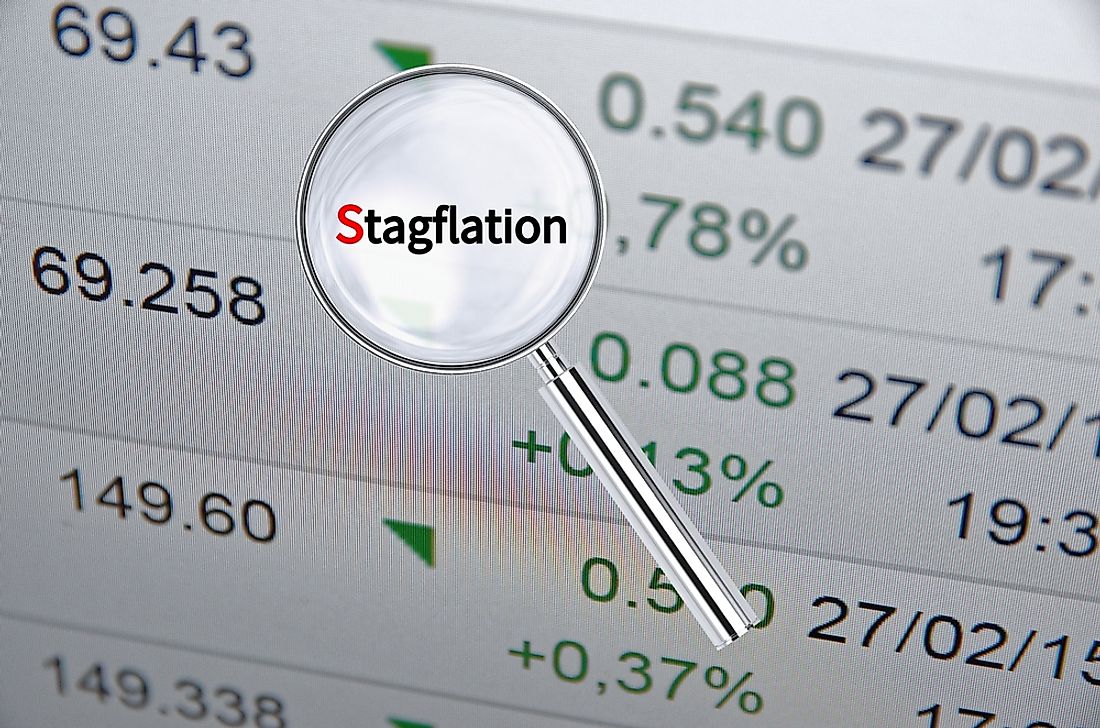What Is Stagflation?

Stagflation refers to an economic phenomenon characterized by stagnant economic growth, high inflation, and high unemployment. It is a contraction of the words stagnant and inflation. When a country’s economy is stagnant, the standard measure of its economic output (GDP) grows at a slow rate coupled with increased prices of commodities and decreased purchasing power among consumers. Typically, stagflation poses a great challenge to monetary policymakers since the precautionary measures against one make the other worse-off. Remedies of high unemployment are practically opposed to the remedies for inflationary cycles and vice versa.
What Causes Stagflation?
The term stagflation was born in the United States in 1970 when the economy experienced a persistent economic slump spiking inflation at a time of slow economic growth. Prior to this economic slump, economists had predicted that it was impossible for an economy to be stagnant and face inflation at the same time. Based on the economic principles as outlined in the Keynesian theory, inflation is a byproduct of economic growth. In the Keynesian theory, the forces of demand and supply influence the economy. When demand is high, during an economic boom, prices rise. However, from the economic turmoil of 1970 attributed to oil embargoes, macroeconomists identified that stagflation results from a combination of failed economic policies and catastrophic events that affect production capabilities of the overall economy.
Stagflation also occurs when there are shocks on the supply side characterized by rapid increase in oil prices, increased government taxes, and escalating interest rates. Such a situation results in increased cost of production for firms making it costly and non-profitable hence slow economic growth. At the same time, the government may increase the supply of money creating conflicting expansionary and contractionary policies that result in unemployment and inflation.
Can Stagflation Reoccur?
In 2010-2011, the United Kingdom experienced stagflation where inflation grew to 5% and the economy remained in a recession with a negative growth rate. The depression was caused by the devaluation of the pound, mushrooming oil prices, increasing import prices, increased food prices, and effects of higher taxes. This lead to inflation and downgraded the standards of living due to unemployment.
In the United States, the federal government instituted expansive monetary policies to rescue the economy from the aftermath of the 2008-2009 financial crisis. At the same time, Congress approved an expansive fiscal policy comprising of deficit spending and an economic stimulus package. People warned of the possibility of stagflation as inflation and unemployment worsened. Economists have assured that stagflation is not likely to reoccur since the unusual conditions that caused stagflation 1970 were unlikely to occur as the federal government would not implement economic policies that constrain supply.
After the removal of the United States from the gold standard, most countries across the globe agreed to value their currencies with either the price of gold or the US dollar. This move turned the dollar into a global currency since 1944 and has been used to create a balance of trade especially in international trade. Moreover, the interdependence between countries and economic integration has ensured commitment to a consistent direction when implementing monetary and fiscal policies by global leaders.











